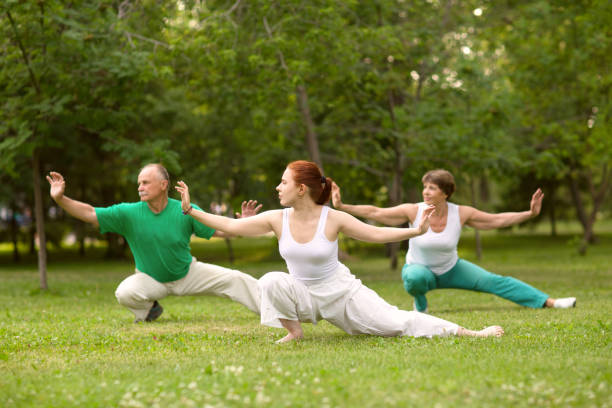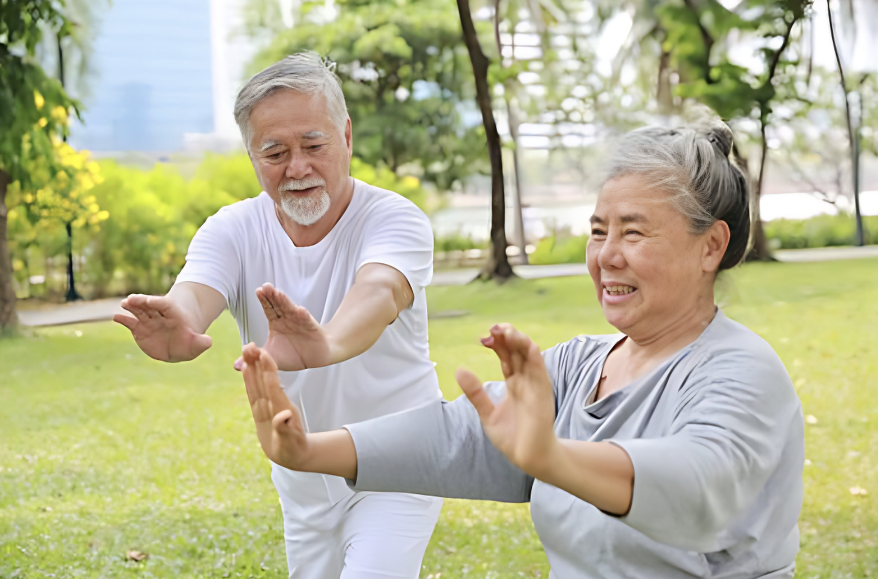Body movement Therapy
Understanding the Difference between Tai Chi and Qigong
Are you curious about the differences between Tai Chi and Qigong? You are not alone! Both of these ancient Chinese techniques have various health advantages and promote the mind-body connection. While they may appear identical at first look, there are several significant differences to be aware of.
Tai Chi, sometimes known as “moving meditation,” is a martial art form centered on slow, controlled motions and deep breathing. It’s intended to improve balance, flexibility, and create inner serenity. Qigong, on the other hand, is a comprehensive practice that uses gentle movements, breath control, and meditation to nurture and balance the body’s essential energy, or “Qi.”

Key Principles and Philosophies
Tai Chi and Qigong are both strongly entrenched in Chinese philosophy and have similar underlying principles. One of the guiding concepts is the concept of Yin and Yang, which depicts the dualism and interconnection of all things. These practitioners strive to achieve balance between these conflicting energies, both inside themselves and in their interactions with the outside world. Another fundamental element is the cultivation and circulation of Qi, or vital energy that circulates throughout the body. Both practices attempt to improve Qi flow, clear blockages, and restore equilibrium to the body’s energy systems.
These ancient Chinese techniques both emphasize the value of awareness and being fully present in the moment. Practitioners are urged to develop a state of relaxed awareness in which they may observe and connect with their own body, breath, and surroundings. The mindfulness part of both activities not only enhances mental clarity and attention, but it also aids in the relaxation and reduction of stress.
Physical Movements and Postures in Tai Chi and Qigong
One of the primary distinctions between these therapies is their physical motions and postures. Tai Chi is often composed of a succession of slow, graceful movements that flow smoothly from one to the next. These movements are frequently influenced by the natural world, such as animal movements or the flow of water. Tai Chi forms can be fairly complex and may take years to learn and master. Each movement is executed with precision and effort, with an emphasis on preserving optimal body alignment and balance.
Qigong, on the other hand, includes a wider variety of exercises and postures. Some Qigong exercises feature slow, flowing movements comparable to Tai Chi, while others are more static, requiring the practitioner to hold precise positions for an extended amount of time. Qigong exercises are classified into three types: dynamic Qigong, static Qigong, and contemplative Qigong, each having its own distinct set of motions and postures. Qigong’s many movements and postures allow practitioners to tailor exercises to their specific requirements and preferences.

Health Benefits of Practicing Tai Chi and Qigong
Both Tai Chi and Qigong provide several health benefits, making them popular among individuals of various ages and fitness levels. Regular practice can help you improve your physical fitness, flexibility, balance, and coordination. Both techniques use slow, controlled motions to develop muscles, enhance joint mobility, and promote good posture. Deep breathing techniques in Tai Chi and Qigong help to improve lung function and respiratory health.
In addition to the physical benefits, they both provide significant mental and emotional benefits. Both techniques emphasize awareness, which improves relaxation, reduces tension, and soothes the mind. Regular practice can help improve sleep quality, raise mood, and alleviate symptoms of anxiety and sadness. Tai Chi and Qigong have also been demonstrated to increase cognitive function, including mental clarity and focus.
Differences in Practice and Focus Between Tai Chi and Qigong
While Tai Chi and Qigong share many characteristics, there are some significant distinctions in their practice and concentration. One of the most significant differences is in their principal intention. Tai Chi emphasizes self-defense and martial arts methods, whereas Qigong focuses on energy development and healing. Tai Chi forms frequently include martial arts moves and applications, which can be used for self-defense. Qigong, on the other hand, is primarily concerned with cultivating and balancing Qi, the vital energy that circulates throughout the body.
Another distinction between Tai Chi and Qigong is the framework of their practices. Tai Chi forms consist of choreographed motions that are done in a certain order. This organized approach enables practitioners to build muscle memory and easily transition from one exercise to the next. In contrast, qigong activities can vary greatly. There are several Qigong exercises and routines to select from, allowing practitioners to customize their practice to meet their unique requirements and goals.

Choosing for Personal Practice
Individual tastes and goals ultimately determine whether to practice Tai Chi or Qigong. If you are interested in martial arts and self-defense, Tai Chi may be a better fit for you. Tai Chi forms combine martial arts techniques and applications, adding a practical component to the practice. On the other hand, if you are more concerned with energy cultivation and holistic healing, Qigong may be a better fit. Qigong activities aim to balance and enhance the body’s energy system, hence improving general well-being.
It is worth mentioning that both ancient Chinese techniques are not mutually exclusive, and many practitioners combine components of both practices into their routine. Some Tai Chi varieties contain Qigong exercises as part of the warm-up or cool-down routine. Similarly, Qigong activities can be added into a Tai Chi routine to improve energy and attention.
Finding a Qualified Instructor for Tai Chi or Qigong
Whether you chose to practice Tai Chi or Qigong, choosing a good instructor is essential for getting the most out of your practice. A knowledgeable and experienced instructor can walk you through the right techniques, ensuring that you practice safely and successfully. When looking for an instructor, think about their qualifications and certification, as well as their teaching style and approach. It’s also critical to find an instructor that connects with you and makes you feel safe and supported in your practice.
You can use a variety of resources to find a qualified instructor. Local community centers, martial arts studios, and wellness centers frequently provide classes or workshops. Online directories and websites specialized to these ancient Chinese techniques can also help you find licensed instructors in your region. Additionally, asking referrals from friends or fellow practitioners can be an effective approach to identify a reputable instructor.
Conclusion
Tai Chi and Qigong are ancient Chinese practices that provide several health advantages and foster mind-body connection. While they have certain commonalities, such as a focus on slow movements, deep breathing, and mindfulness, there are significant differences between them. Tai Chi stresses self-defense and martial arts methods, whereas Qigong concentrates on energy development and healing. Tai Chi forms follow a defined sequence of motions, whereas Qigong exercises vary more significantly. Both activities provide physical, mental, and emotional benefits, and the decision between the two is ultimately based on personal preferences and goals.
Whether you practice one or the other Chinese technique, choosing a skilled instructor is critical to your success and enjoyment. A qualified instructor can walk you through the methods, offer personalized feedback, and foster a positive learning atmosphere. With consistent practice and supervision from a skilled instructor, you can reap the many transforming advantages of these ancient Chinese techniques and embark on a path to better health and well-being.
Trusted Health, Wellness, and Medical advice for your well-being


